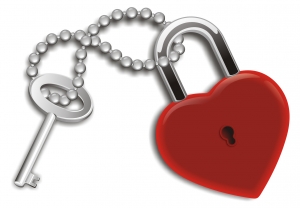We all want to protect our valuables from theft, damage and destruction, especially if they are irreplaceable family heirlooms or important documents. And a great way to do this is to purchase a safe for the home.
Today’s market offers a wider range of protection options than ever before. While this can be beneficial, for the first-time purchaser, it can provide an even greater feeling of frustration. But knowing a few basics about home safes can help reveal the right direction for your unique situation.
Identify Your Needs
Before you even choose the type of safe you are going to purchase, you will have to determine what your safe will be used for. For example, if you only want to store jewelry in your safe, than you may require a different model than if you were planning to store electronics or documents.
You will also have to look at which types of damage you want to protect your important items from. Safes are available which help protect against theft, fire, or both.
Another consideration will be the type of lock your safe has. Lower-tech models will feature a key entry, and as you ascend through price ranges, become more advanced with electrical and finger imprint entry.
Types of Safes
Safes can be purchased for putting into a wall, into your floor, or sit by themselves somewhere in your home. There are also diversion and laptop safes, both types designed to fool burglars into thinking they don’t contain any valuables.
Free standing safes are pretty self-explanatory. They offer resistance to fire and, if big enough, won’t be anything that a burglar would bother with due to their impressive weight.
The floor safe offers a few more options. It can be located in your floor, cemented into basement walls or placed in the floor. Narrow like the wall safe, floor safes can fit between floor boards. They can be concealed by an area rug, couch or other piece of furniture.
The diversion safe is a great way to keep small items from unwanted attention. This type of safe can look like any one of a number of things you may see in a regular day; a book, a candle, and even pantry items. A lot of people use diversion safes to hide things like keys and emergency money.
If you enjoy spy movies, then you might want to pay homage by having a wall safe installed. This will involve some cutting of the drywall to make room for this kind of safe, which is usually narrow enough to fit between the studs in your wall. Once in place, your safe can be hidden by a piece of furniture or a painting.
A laptop safe isn’t something that you put your computer in to keep it from theft. It’s actually a type of safe that is designed to fit in or under a desk drawer. This type of safe is great for hiding small electronics or computer equipment like a thumb or hard drive.
Safe Ratings
First of all, every safe you consider will have some type of UL rating. “UL” stands for Underwriters Laboratories, Inc., which is a safety testing and certification organization. The UL is a not-for-profit, independent company that tests many products for the purpose of keeping the public safe.
Safes that are designed to protect items from fire will have one of three ratings; 30 minutes, one hour or four hours. These ratings indicate for how long the items inside the safe can withstand the heat from a fire before succumbing to it.
Safes which have been designed to resist prying, drilling or cutting will have a combined rating. This rating includes the class rating – between 1 and 5 – which rates each safe according to the thickness of its walls and door, in addition to its ability to resist attack, and a letter designation. An X6 rating is usually reserved for jeweler and banker safes. ‘DR’ stands for drill resistant, ‘TRTL’ for tool and torch, ‘TR’ for torch and ‘DR’ for drill resistance.
Now that you are aware of the types of safes and their designations, you have even more reason to explore this cost-effective option for keeping all that’s important to you locked away.
Guest author Emma Prior writes on a variety of topics, but is particularly well-versed in home security systems. She is a frequent contributor at the Home Security Systems Geek, a site dedicated to helping consumers research the topic. You can also find Emma on Google.

